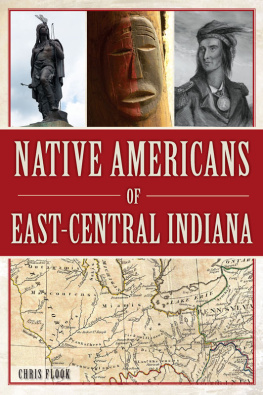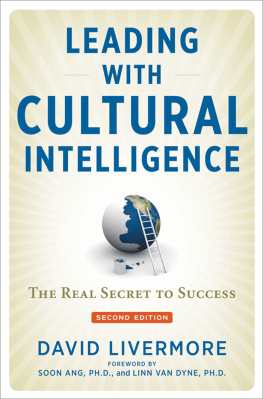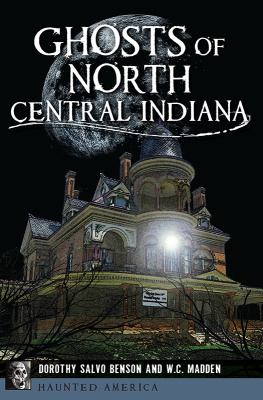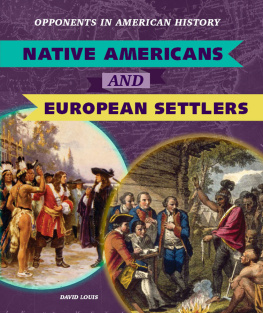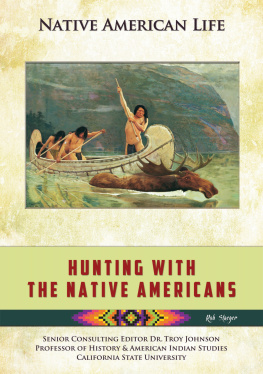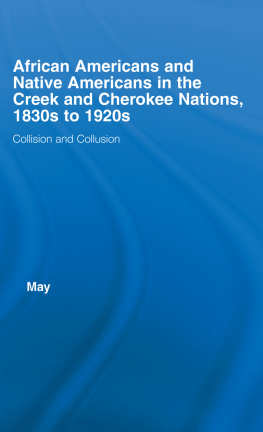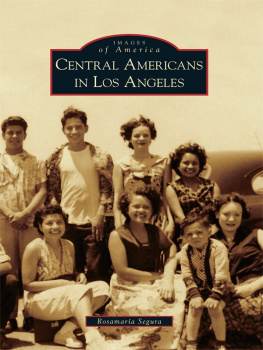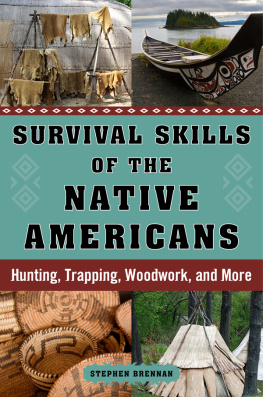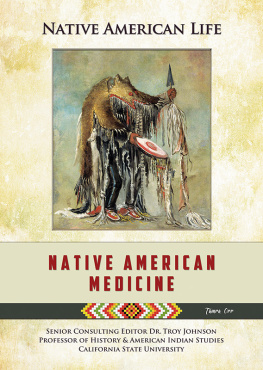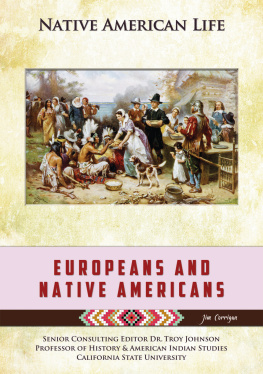Zhi - Native Americans of East-Central Indiana
Here you can read online Zhi - Native Americans of East-Central Indiana full text of the book (entire story) in english for free. Download pdf and epub, get meaning, cover and reviews about this ebook. genre: History. Description of the work, (preface) as well as reviews are available. Best literature library LitArk.com created for fans of good reading and offers a wide selection of genres:
Romance novel
Science fiction
Adventure
Detective
Science
History
Home and family
Prose
Art
Politics
Computer
Non-fiction
Religion
Business
Children
Humor
Choose a favorite category and find really read worthwhile books. Enjoy immersion in the world of imagination, feel the emotions of the characters or learn something new for yourself, make an fascinating discovery.
Native Americans of East-Central Indiana: summary, description and annotation
We offer to read an annotation, description, summary or preface (depends on what the author of the book "Native Americans of East-Central Indiana" wrote himself). If you haven't found the necessary information about the book — write in the comments, we will try to find it.
Zhi: author's other books
Who wrote Native Americans of East-Central Indiana? Find out the surname, the name of the author of the book and a list of all author's works by series.
Native Americans of East-Central Indiana — read online for free the complete book (whole text) full work
Below is the text of the book, divided by pages. System saving the place of the last page read, allows you to conveniently read the book "Native Americans of East-Central Indiana" online for free, without having to search again every time where you left off. Put a bookmark, and you can go to the page where you finished reading at any time.
Font size:
Interval:
Bookmark:

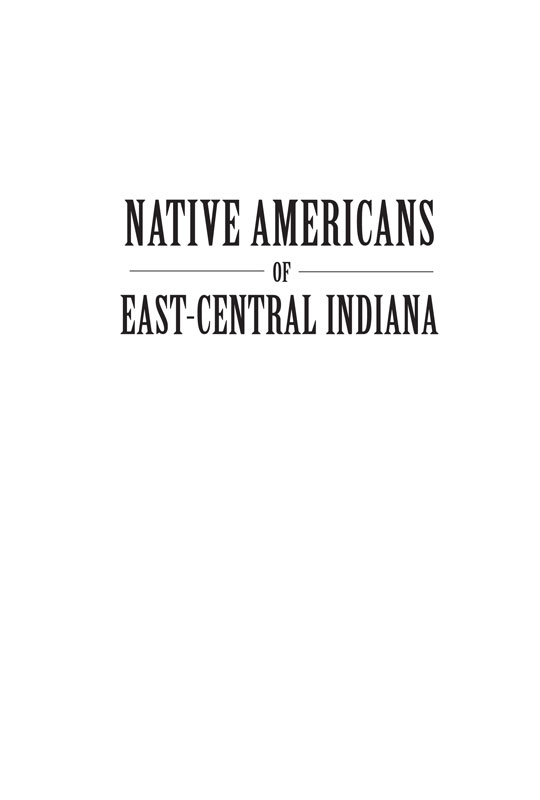

Published by The History Press
Charleston, SC
www.historypress.net
Copyright 2016 by Chris Flook
All rights reserved
First published 2016
e-book edition 2016
ISBN 978.1.62585.720.0
Library of Congress Control Number: 2016930881
print edition ISBN 978.1.46711.856.9
Notice: The information in this book is true and complete to the best of our knowledge. It is offered without guarantee on the part of the author or The History Press. The author and The History Press disclaim all liability in connection with the use of this book.
All rights reserved. No part of this book may be reproduced or transmitted in any form whatsoever without prior written permission from the publisher except in the case of brief quotations embodied in critical articles and reviews.
The book is dedicated to the Delaware Tribe of Indians. Their perseverance, hospitality and kindness are qualities we should all seek to emulate.
Contents
Foreword
The study of Indigenous peoples in early Indiana is a history of mans ingenuity and practicality in adapting to the environment in which they lived. The early east-central Indiana groups, identified as Adena and Hopewell, are explored in this book regarding how we identify their specific culture from relics, effigies and artifacts. We can learn how they distinguished themselves from other peoples by examining these remains. It is truly amazing to see the variety and the myriad ideas in these objects, along with how they used these materials to adapt to their environment. These groups would be considered eastern woodland peoples.
As we move from pre-contact into modern times, just after 1500 in our common era, we distinguish between tribal peoples who are identified by a specific language and culture. In our area, the Lenape, or Delaware, arrived in what would become the state of Indiana in the 1790s and had a positive impact on early state development. The Lenape, who were forced from the East Coast, also had a positive impact on Indiana with the founding of what would become the cities of Muncie and Anderson. The descendants of Lenape in Indianathe Delaware Tribe of Indians, who live in Oklahomaare the twenty-fifth-largest tribe in the United States and are still a viable tribe.
The study of these cultures in Indiana is a testament to their practicality and adaptability. The author presents a positive look at both pre-contact and modern tribes in an entertaining and informative way. I commend the author for his efforts to bring attention to the early history of Indiana and the cultures who helped to form it.
Wanishi ta. Thank you very much!
MICHAEL PACE
Former Assistant Chief
Delaware Tribe of Indians
Bartlesville, Oklahoma
Acknowledgements
Without the help of the following people, the completion of this book would simply not have been possible. I wish to thank my fantastic copy editor, Kathie Flook; Jarred Scott and Leo Caldwell for their photography; Kelli Huth for early feedback; the philologist Raymond Whritenour and language expert Jim Rementer for their evaluation; George Everett Keller and Jim Huth for their fantastic artwork; Kevin Nolan for his evaluation of Part I and his artifact dating; Cathy Carson for her artifact dating; Steve Snodgress, Matt Zacek and family, as well as Alan Flook, for access to their artifact collections; Christy Brocken, the Conner Prairie Interactive History Park, the Strawtown Koteewi Park, the State Museum of Pennsylvania and the Indiana Historical Society for providing historical images; the Delaware County Historical Society for its assistance in research; and Mike Pace for his consistent dedication and enthusiasm for Native American history in Indiana.
Introduction
There was never a Native American chief named Munsee living at any point in time in east-central Indiana. There were, however, chiefs named Kikthawenund, Buckhongehelas, Hockingpomsga and Tetepachsit. There was never a man named Munsee, and the two Native American statues on Walnut Street in Muncie are unrelated. Munsee refers to a dialect spoken by the Delaware, or Lenape, people. Along with their Unami-speaking brethren, the Munsee-speaking Lenape were an Algonquian indigenous culture that flourished along the Hudson and Delaware River Valleys. The Lenape were eventually pushed into Indiana after the Northwest Indian War. Furthermore, the fantastic earthworks found along Indiana waterways in Anderson, Yorktown, New Castle, Windsor and Winchester are remnants from Native Americans living in east-central Indiana thousands of years ago, whose material and burial culture archaeologists refer to as New Castle Phasea localized expression of regional Adena and Hopewell cultures. I learned these facts of history and the distinction between New Castle Phase and Lenape Native Americans, embarrassingly, as an adult. Like many Hoosiers, I knew little of Indianas post-European contact with Native Americans and even less about the pre-European cultures.
Then, as lifes greatest intellectual discoveries often happen, I stumbled across Frank Haimbaughs 1924 History of Delaware County Indiana. While reading Haimbaughs history, I noted the absence of a Chief Muncie and a distinct two-thousand-year separation between the moundbuilders and the post-contact Native American Lenape period, suggesting a far more complex past regarding Native American history than what is commonly discussed in Indiana history books. That simple discovery has led to a decade-long investigation of Native American history and archaeology in east-central Indiana. This book is a result of that research, an overview of what scholars know about the indigenous peoples of east-central Indiana. This exploration extends back thousands of years to local expressions of what some archaeologists refer to as the Adena and Hopewell cultures and will cover post-European contact groups with an emphasis on the Lenape. This book is best considered an introduction to the culture, history and archaeological record of east-central Indianas first peoples. Hundreds, if not thousands, of books, scholarly articles, archaeological reports, historical narratives, oral histories, settlers tales, linguistic studies and government documents exist covering the indigenous groups that lived in east-central Indiana. For those readers interested in exploring further, an extensive bibliography is included in the back of this book, listing the sources in order to dig deeper.

Buckhongehelas. Courtesy of George Everett Keller.
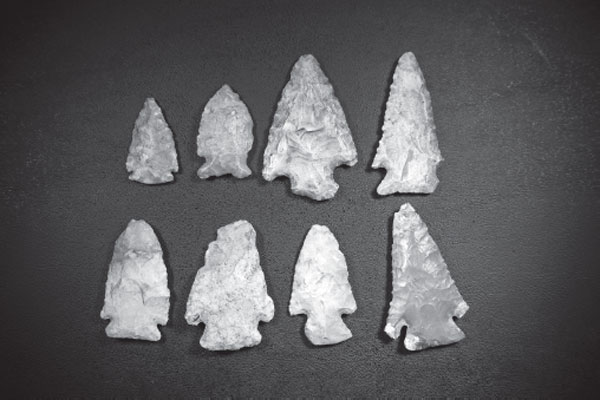
A collection of notched projectile points found in Indiana. Courtesy of Alan Flook.
The book is arranged chronologically, with Part I focusing on Native Americans in east-central Indiana living during Early and Middle Woodland Periods. Part II focuses on post-European contact indigenous cultures in the same area. The latter part emphasizes the Lenape, or Delaware, peoples. While the Miami and Shawnee were active in this area, the Lenape were the predominant group living along the west fork of the White River at the end of the Northwest Indian War.
Next pageFont size:
Interval:
Bookmark:
Similar books «Native Americans of East-Central Indiana»
Look at similar books to Native Americans of East-Central Indiana. We have selected literature similar in name and meaning in the hope of providing readers with more options to find new, interesting, not yet read works.
Discussion, reviews of the book Native Americans of East-Central Indiana and just readers' own opinions. Leave your comments, write what you think about the work, its meaning or the main characters. Specify what exactly you liked and what you didn't like, and why you think so.

